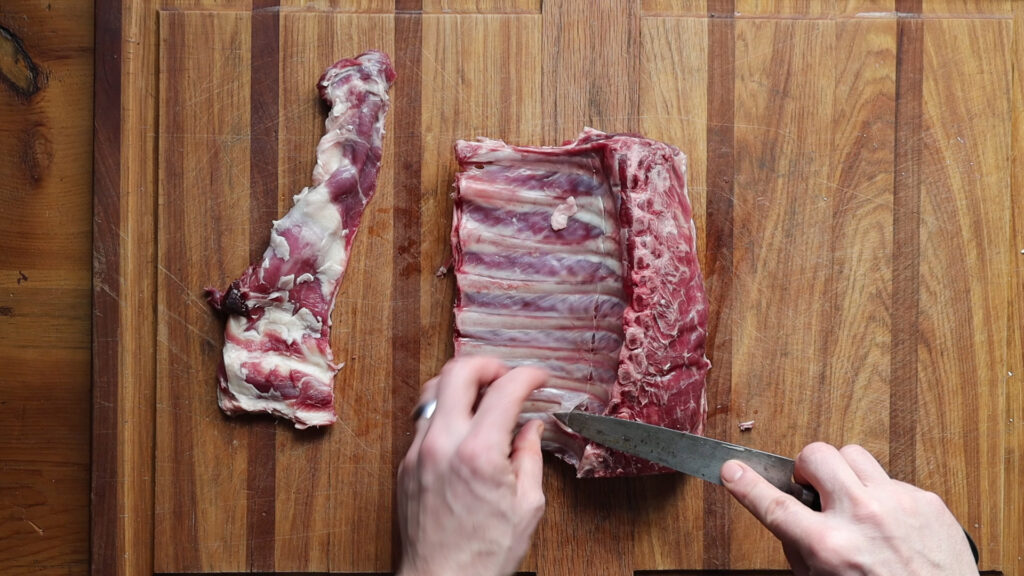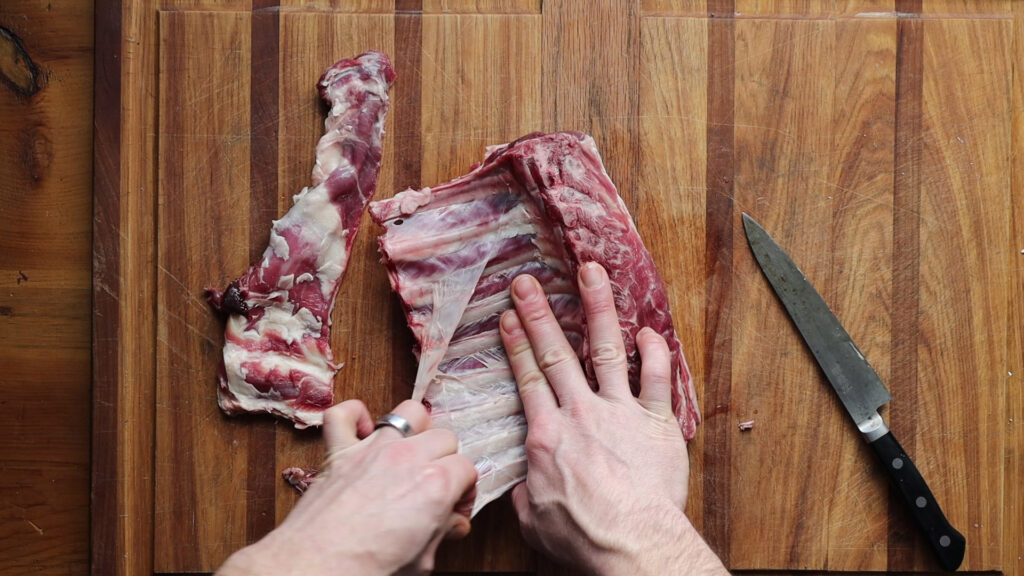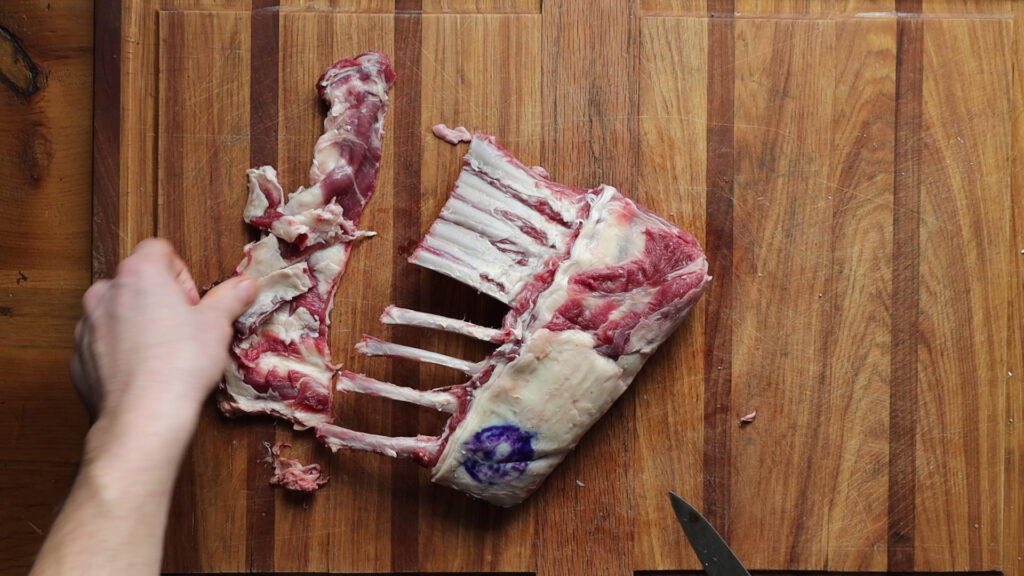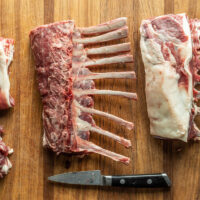How to French a Rack of Lamb (or Goat)
Frenching a rack of lamb or goat, or trimming to enhance the look is a good trick to know how to do, especially if you want to recreate an experience similar to eating rack of lamb at a restaurant.
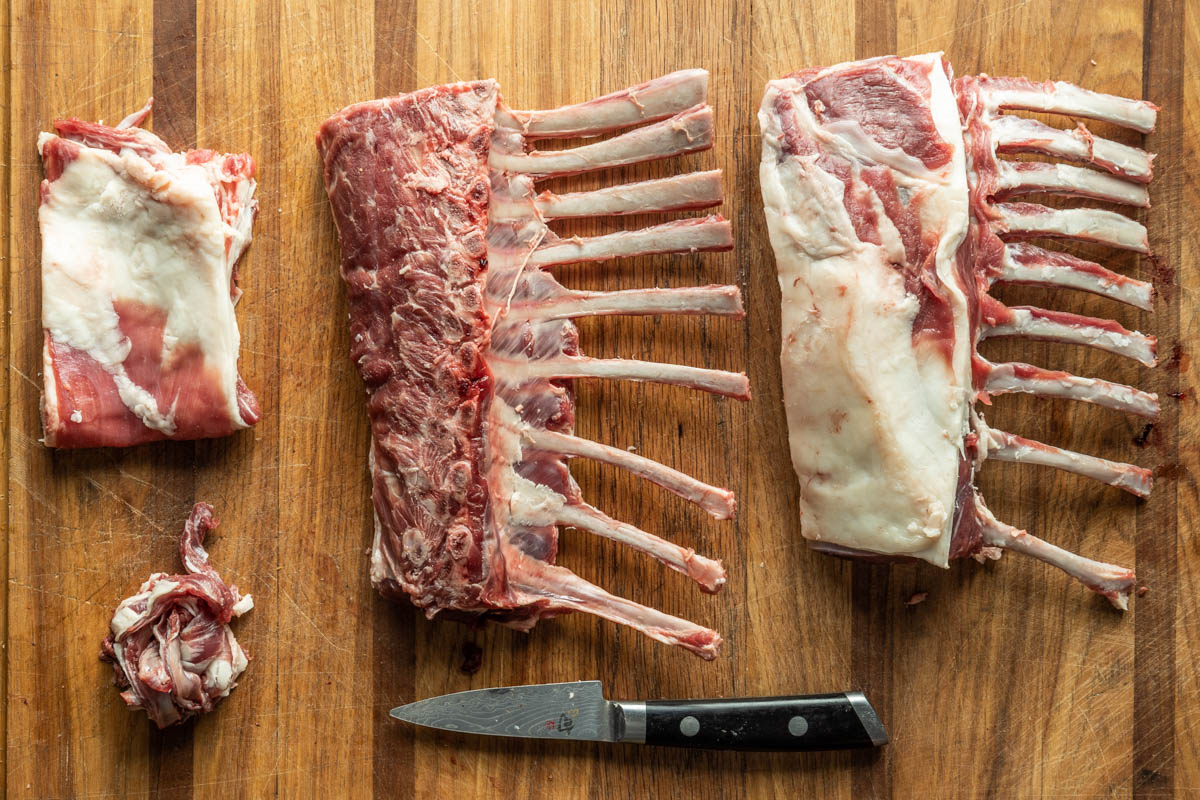
At every restaurant I’ve ever worked at, racks of lamb and goat have been Frenched before cooking. Frenching is useful for a number of reasons, the most important being that it makes the chops look more elegant, as well as removing some of the extra fatty rib meat on top of the ribs that some eaters may not like to eat. The fatty rib meat is still good eating, but it takes much longer to render and crisp compared to the time it takes for the loin, or inner meat of the chop to cook.
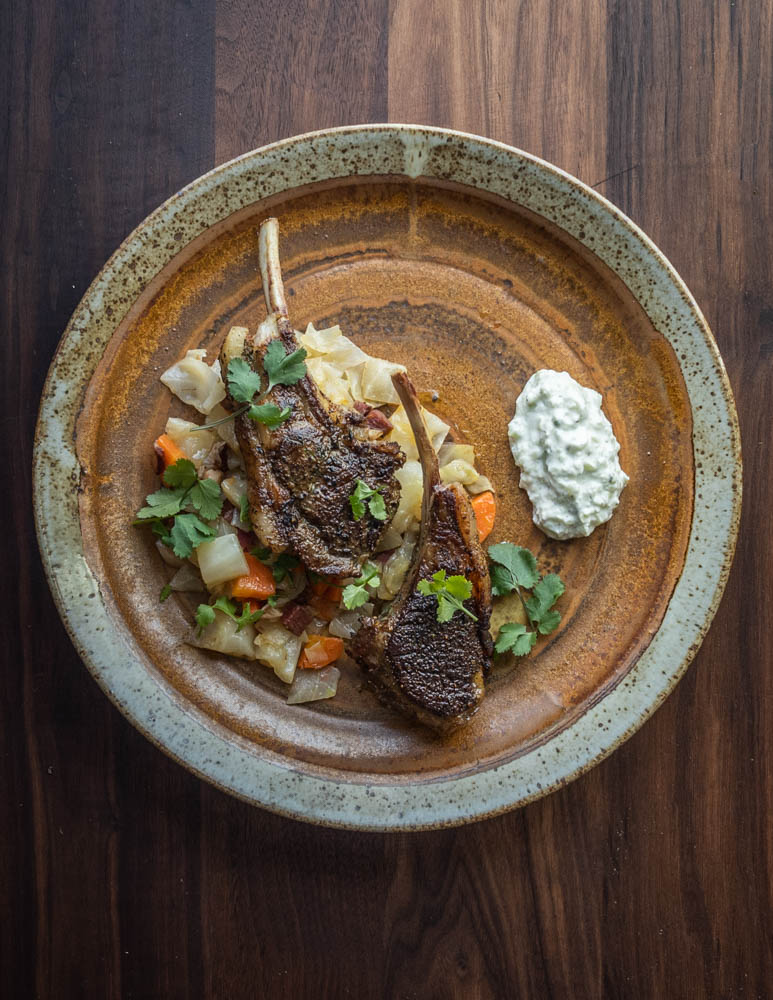
That being said, I don’t always French my lamb and goat racks before I cook them. If I slow-cook a rack, I prefer to leave the top layer of fat on since it will render and crisp as the meat cooks for hours in the oven, becoming one of the best parts of the meal. If you haven’t tried slow-cooking a rack of lamb or goat I definitely recommend it, especially if the people you’ll be serving prefer their meat a little more well-done.
Buy a Frenched rack of lamb
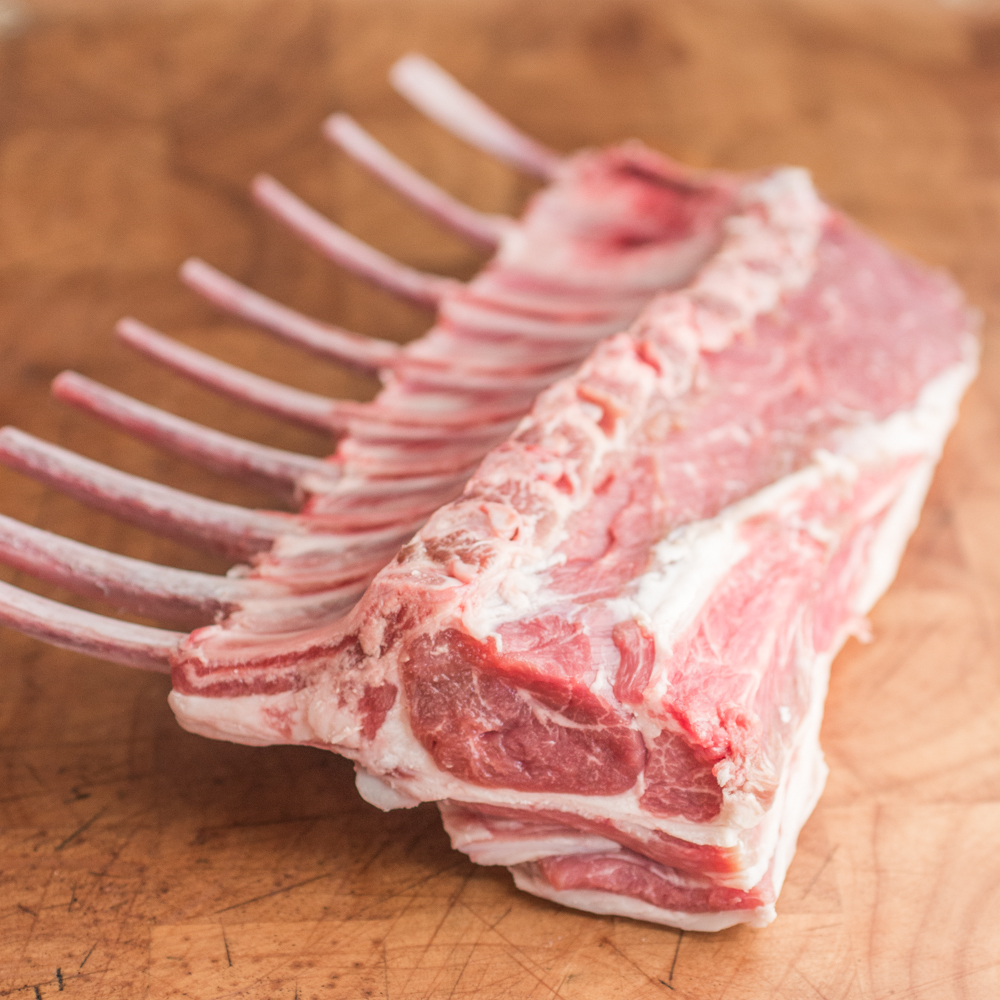
If you want to skip the process of Frenching a rack of lamb yourself and have us do it for you, it’s no problem. Shepherd Song sells pre-Frenched racks, half racks, and chops.

This recipe is by Chef Alan Bergo, the Forager Chef. A chef from Minnesota, Alan is a culinary industry veteran, former executive chef of acclaimed Lucia’s Restaurant, and the Salt Cellar. Author of The Forager Chef’s Book of Flora, he’s one of the most respected voices in the world of foraging and wild food. He’s best known as the founder of Forager Chef, his website focused on wild ingredients that reaches millions of readers each year. Learn more about Chef Alan and his hunt for mushrooms, wild and obscure foods at foragerchef.com.
Looking to buy lamb or goat online? Shepherd Song Farm: Grass to table. We raise lambs & goats traditionally, humanely and sustainably. 100% Grass Fed, Pasture Raised, Never Confined, no Hormones, Grains or Animal Byproducts. Born, raised and processed in the U.S.A. Good for you and good for the environment.
How to French a Rack of Lamb Step-by-Step
It takes a little time and you’ll need a sharp paring knife, but it’s worth it. The images below describe the process. Don’t worry too much about getting the bones perfectly clean, the most important part of Frenching is removing the fat. The leftover fat cap can be cut into pieces and rendered for cooking fat. The leftover lamb cracklings make fantastic crackling cornbread.
Related Posts
How to Cook a Lamb Saddle Roast
How to Cut up a Lamb Leg Into Roasts
How to Cut Lamb Barnsley Chops
How to French a Rack of Lamb or Goat
Equipment
- Small sharp paring knife
- 1 Cutting board
Materials
- Rack of lamb or goat
Instructions
- Using a small, sharp paring or utility knife, draw a line slightly under where the meat meets the bone on the top of the rack. Cut downward at an angle to begin to remove the top layer of meat covering the bones, working carefully to stay as close to the bone as possible.
- Next, flip the rack over and insert the tip of your paring knife in between the paper-thin membrane and the bone. Gently wiggle the tip of the knife under the membrane and wiggle it a bit to help free it. Feel free to use your hands and fingers here when it feels right.
- After the membrane is removed, cut down along the bones to remove the meat in between each chop. This step is optional, and some people may like to have the meat remaining on the bone, especially if they like to pick up the bones and gnaw on them, as some people in my family do.
- To cook the rack, season with salt and pepper all over, sear in a hot pan, transfer to a 300 F oven and cook until the internal temperature reads 140 F in the center. Remove the rack of lamb and rest in a warm place for 5-10 minutes, then cut into chops and serve.
Video
Notes



